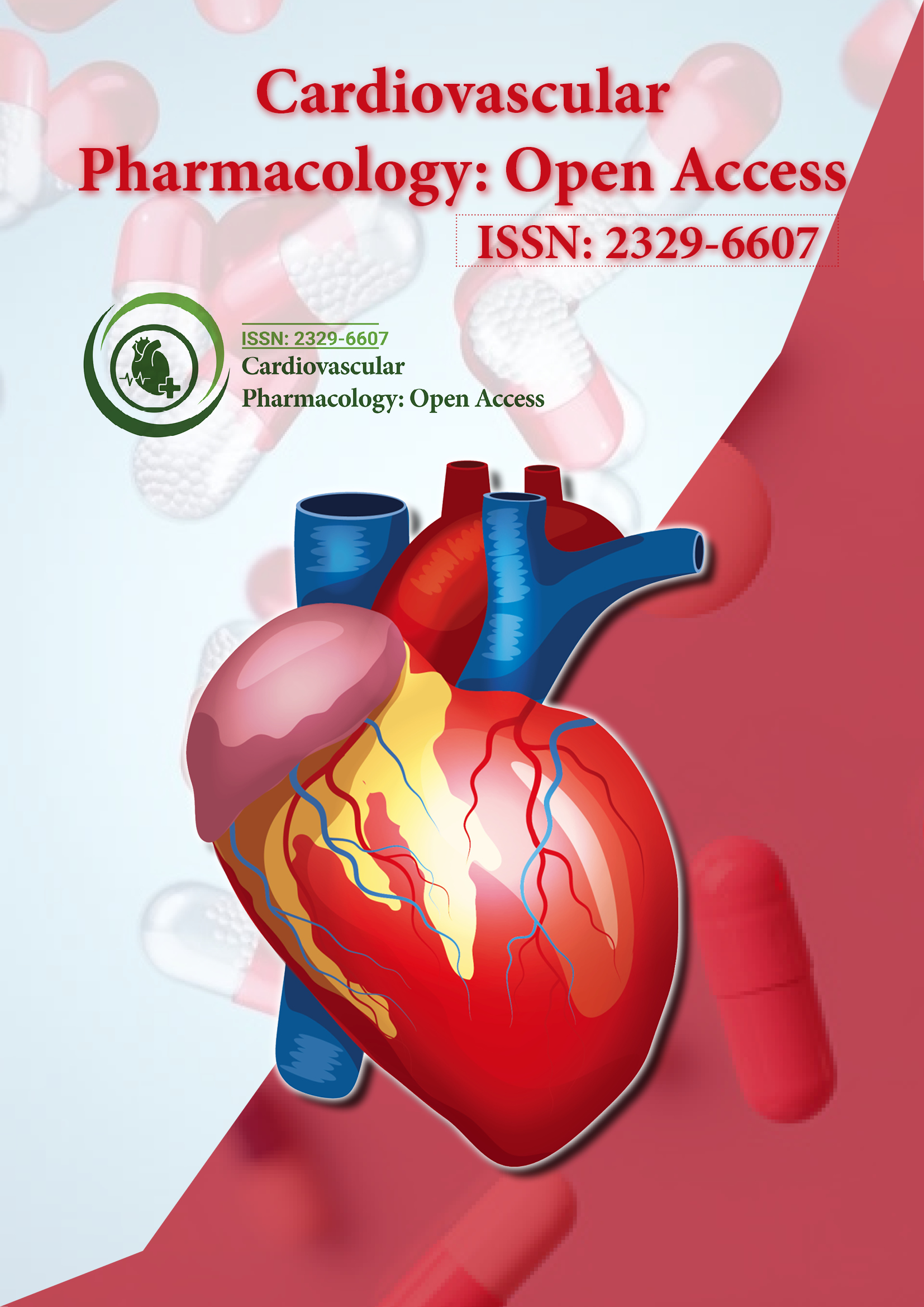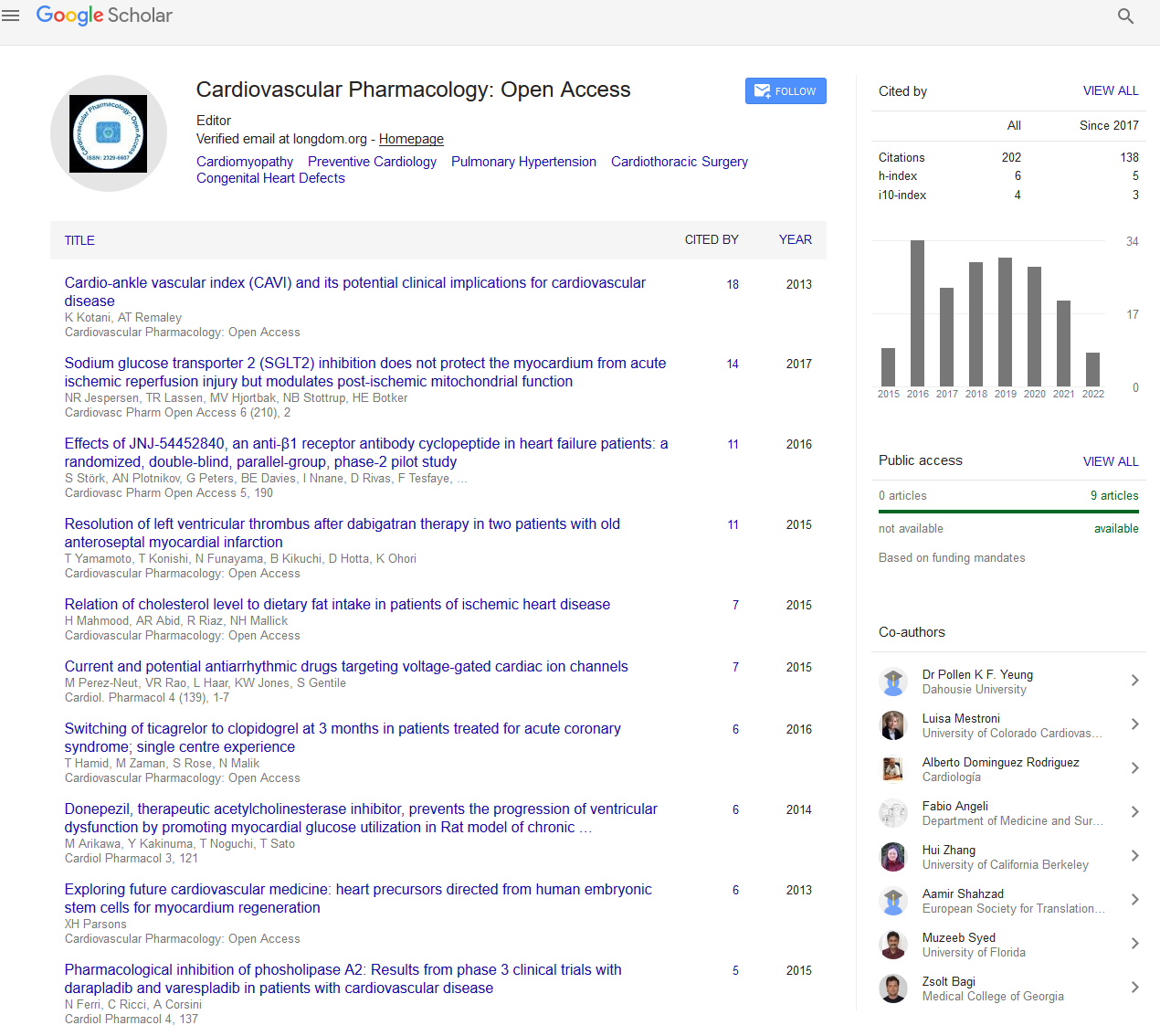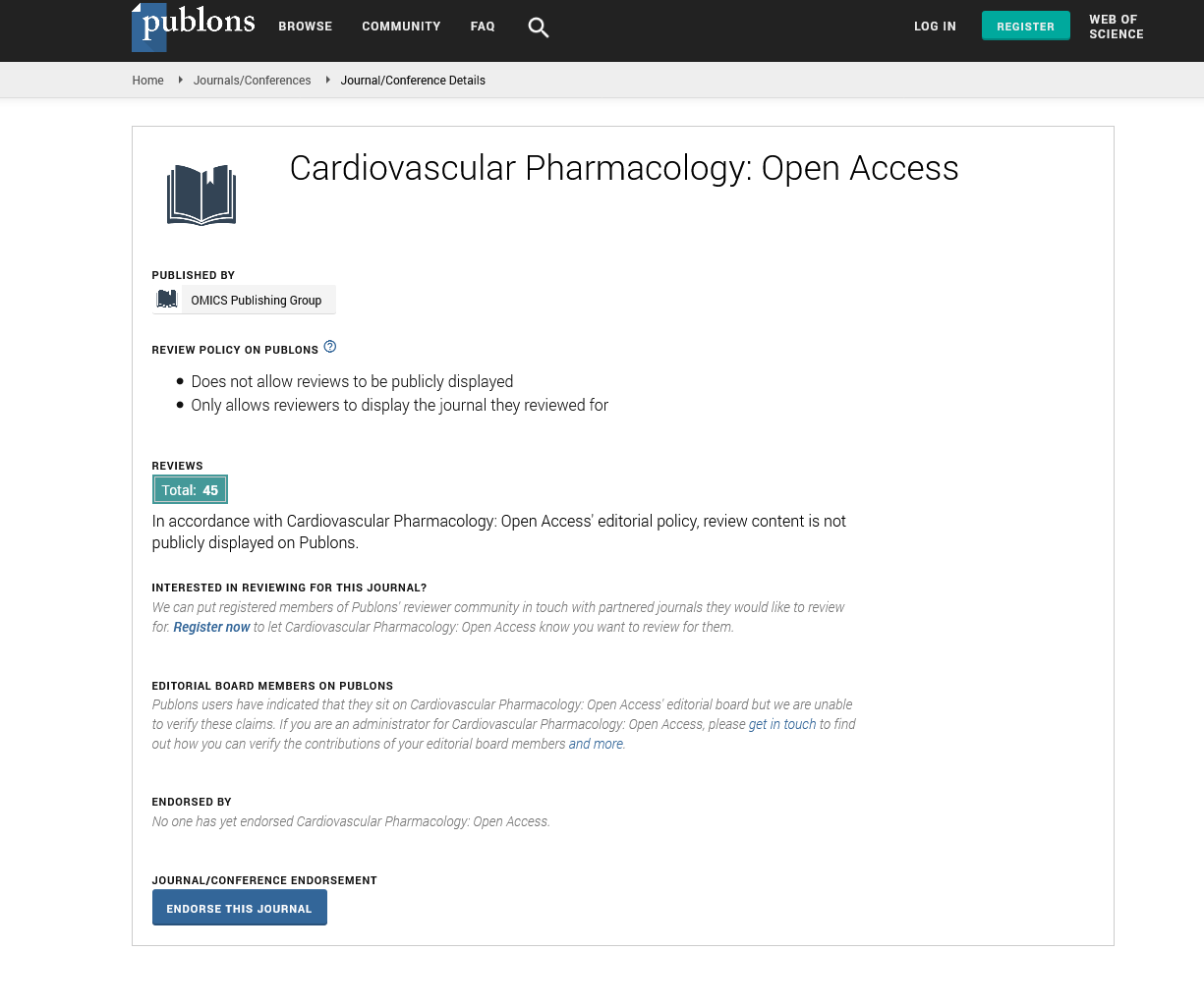Indexed In
- Open J Gate
- Cosmos IF
- RefSeek
- Hamdard University
- EBSCO A-Z
- OCLC- WorldCat
- Publons
- Geneva Foundation for Medical Education and Research
- Euro Pub
- Google Scholar
Useful Links
Share This Page
Journal Flyer

Open Access Journals
- Agri and Aquaculture
- Biochemistry
- Bioinformatics & Systems Biology
- Business & Management
- Chemistry
- Clinical Sciences
- Engineering
- Food & Nutrition
- General Science
- Genetics & Molecular Biology
- Immunology & Microbiology
- Medical Sciences
- Neuroscience & Psychology
- Nursing & Health Care
- Pharmaceutical Sciences
Opinion Article - (2025) Volume 14, Issue 1
Optimizing Antiarrhythmic Drug Surveillance for Atrial Arrhythmias in Hospital Settings
Jason Lee*Received: 19-Feb-2025, Manuscript No. CPO-25-28930; Editor assigned: 21-Feb-2025, Pre QC No. CPO-25-28930 (PQ); Reviewed: 07-Mar-2025, QC No. CPO-25-28930; Revised: 14-Mar-2025, Manuscript No. CPO-25-28930 (R); Published: 21-Mar-2025, DOI: 10.35248/2329-6607.25.14.420
Description
The management of Atrial Fibrillation (AF) and Atrial Flutter (AFL) in hospitalized patients is a complex clinical challenge, often necessitating the use of antiarrhythmic drugs (AADs) to restore and maintain sinus rhythm. While these medications are essential tools in controlling arrhythmias, their use is accompanied by a need for careful monitoring due to potential toxicity, proarrhythmic effects and variable pharmacokinetics. This monitoring invariably introduces significant costs to healthcare systems, raising important questions about the economic impact and overall value of routine drug surveillance in this patient population.
Antiarrhythmic drug monitoring generally involves frequent electrocardiographic evaluations, serum drug level measurements and laboratory tests to detect adverse effects such as hepatotoxicity, thyroid dysfunction, or electrolyte imbalances. Although these safety checks are clinically justified, their cost implications are substantial, particularly in resource-limited settings. Given the high prevalence of AF and AFL worldwide and the associated burden on hospitals, optimizing the cost-effectiveness of monitoring protocols should be a priority.
In my opinion, current monitoring strategies for AADs could benefit from a more individualized approach rather than a one-size-fits-all model. The heterogeneity in patient risk profiles including age, comorbidities, renal and hepatic function and concomitant medications suggests that a stratified monitoring regimen may reduce unnecessary testing and hospital resource utilization. For example, patients with preserved organ function and no prior adverse reactions might safely undergo less intensive surveillance compared to those with multiple risk factors. Implementing risk prediction models in clinical workflows could guide such personalized monitoring, potentially lowering costs without compromising safety.
Moreover, technological advancements such as point-of-care testing and wearable ECG devices could revolutionize antiarrhythmic drug monitoring by enabling outpatient surveillance and reducing hospital length of stay. Remote monitoring platforms can provide continuous rhythm assessment, early detection of arrhythmia recurrence and timely alerts for drug toxicity signs. Although upfront investment in these technologies may be high, their capacity to decrease hospitalization duration and reduce complications could result in significant long-term savings.
Another aspect worth considering is the choice of antiarrhythmic agent itself. Some drugs, such as amiodarone, require extensive monitoring due to their complex side effect profile, while others like sotalol or flecainide might be associated with less frequent testing. Therefore, cost analysis should extend beyond monitoring expenses to include drug acquisition costs, hospitalization costs due to adverse events and the economic impact of treatment failure. An integrative evaluation of these factors will provide a more accurate picture of the true cost burden.
It is also important to recognize the role of multidisciplinary care teams including cardiologists, pharmacists and nurses in optimizing antiarrhythmic drug use and monitoring. Structured protocols and clinical decision support systems can standardize care, minimize unnecessary tests and improve patient outcomes. Education of healthcare providers on cost-effective monitoring strategies and patient selection criteria can further contribute to reducing wasteful expenditures.
Despite the clear clinical necessity for monitoring, the cost-effectiveness of various strategies remains insufficiently studied. Future research should focus on large-scale economic evaluations comparing different monitoring frequencies, modalities and drug regimens. Incorporating patient-reported outcomes and quality of life metrics will also be essential to balance financial considerations with therapeutic efficacy and safety.
In conclusion, while antiarrhythmic drug monitoring is indispensable in managing hospitalized AF and AFL patients, there is a pressing need to optimize its cost-effectiveness. Personalized monitoring approaches, adoption of emerging technologies, thoughtful drug selection and multidisciplinary care coordination present potential methods to reduce economic burdens without compromising patient safety. Addressing these challenges will require collaborative efforts between clinicians, healthcare administrators and policymakers to ensure sustainable and high-quality arrhythmia care.
Citation: Lee J (2025). Optimizing Antiarrhythmic Drug Surveillance for Atrial Arrhythmias in Hospital Settings. Cardiovasc Pharm. 14:420.
Copyright: © 2025 Lee J. This is an open access article distributed under the terms of the Creative Commons Attribution License, which permits unrestricted use, distribution, and reproduction in any medium, provided the original author and source are credited.


